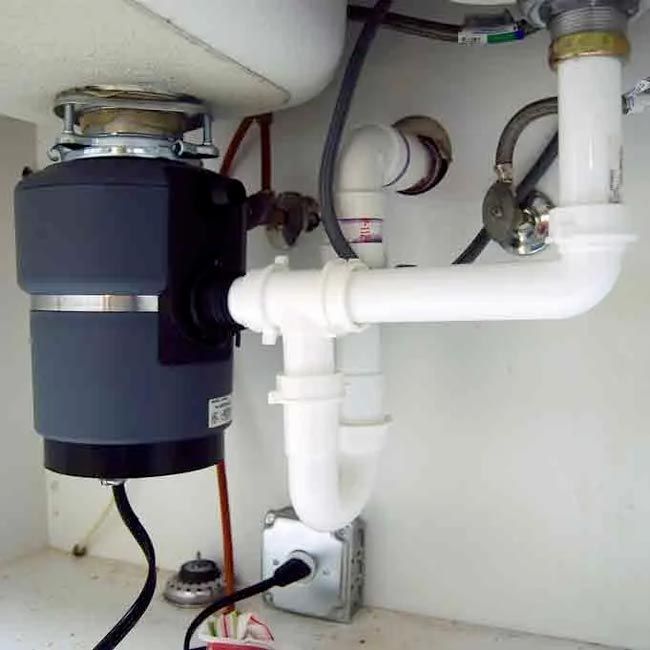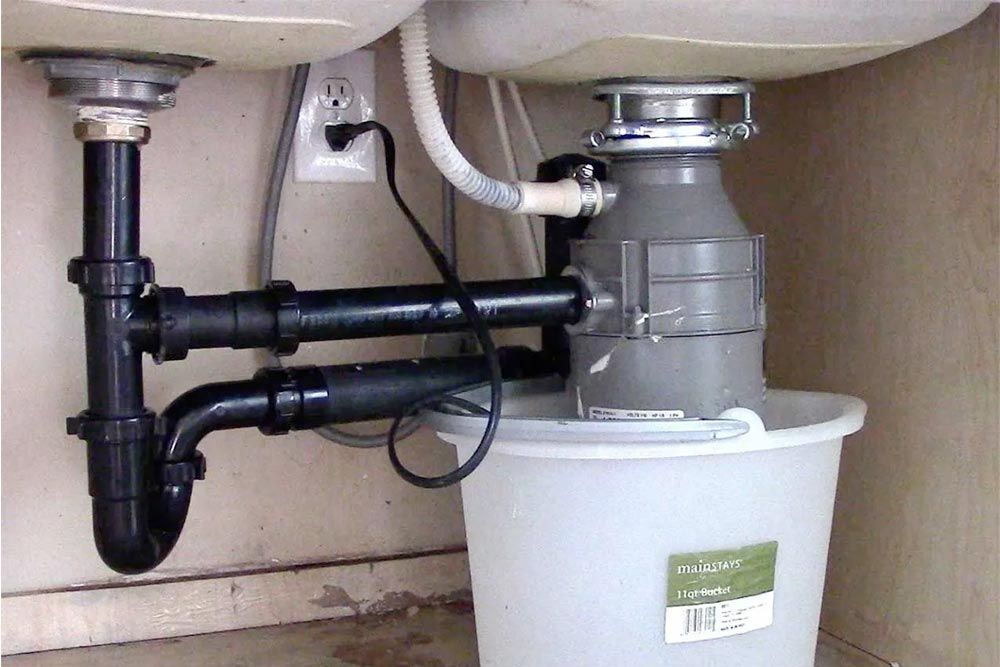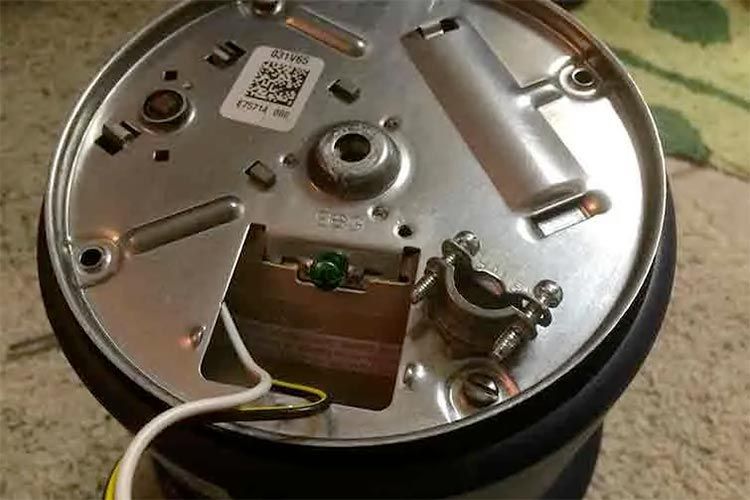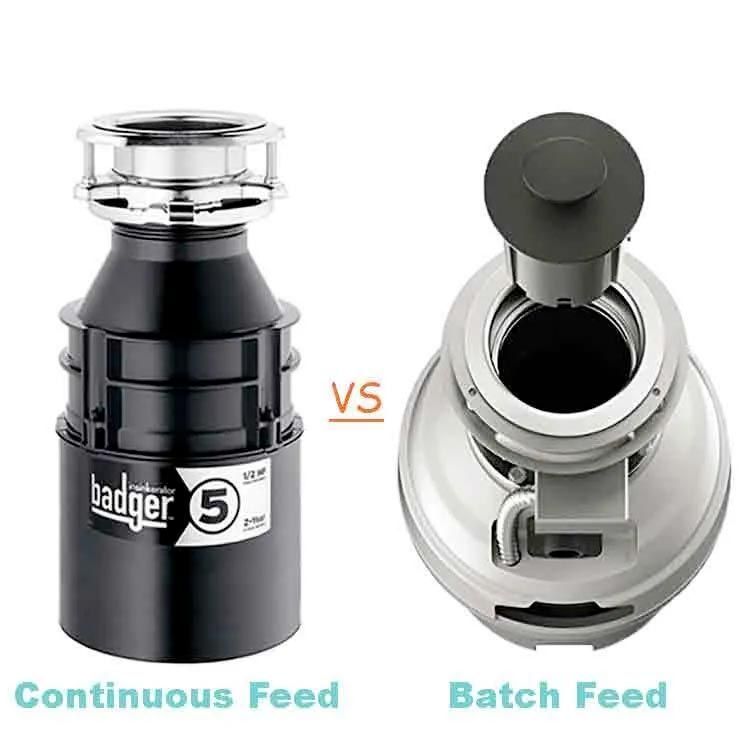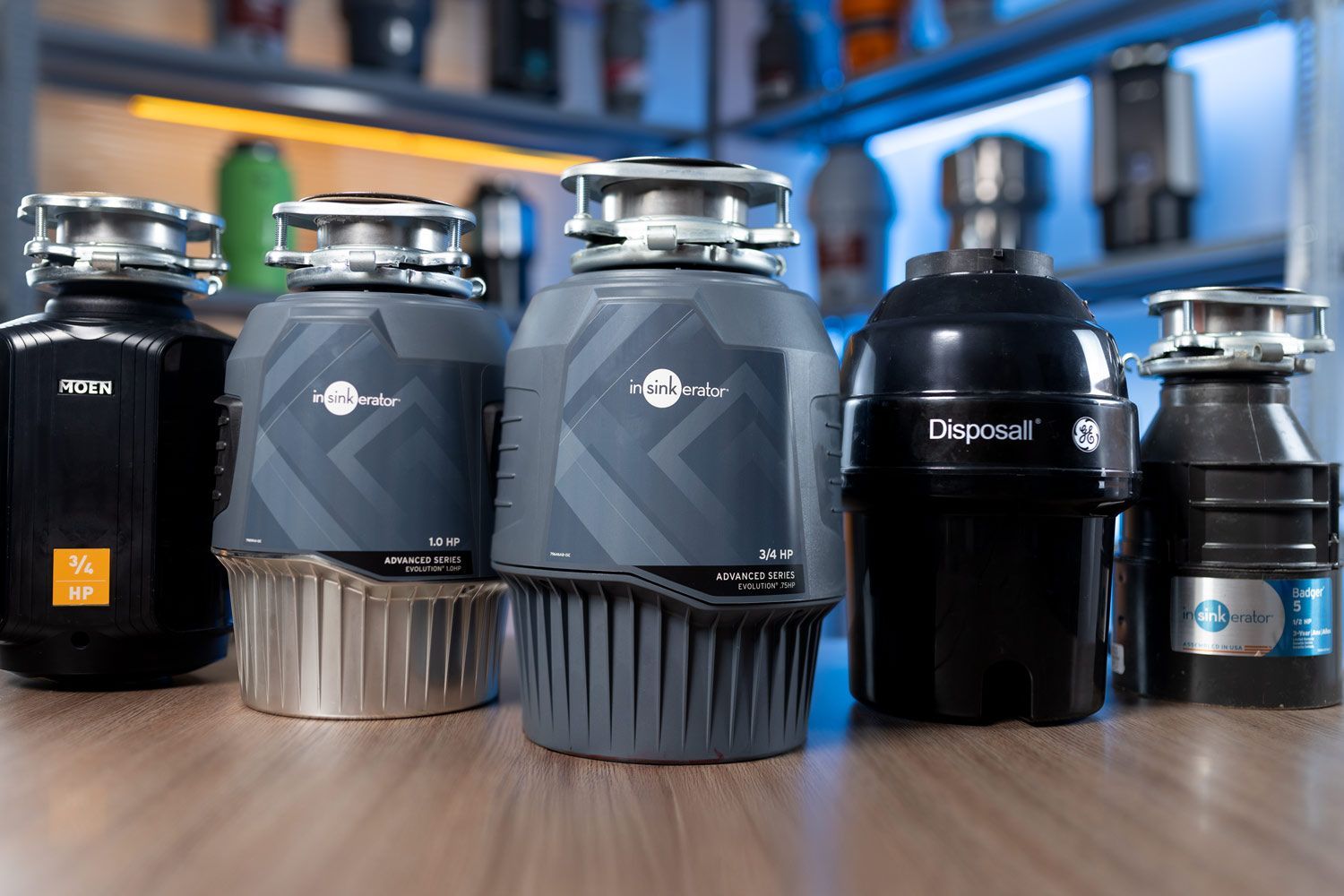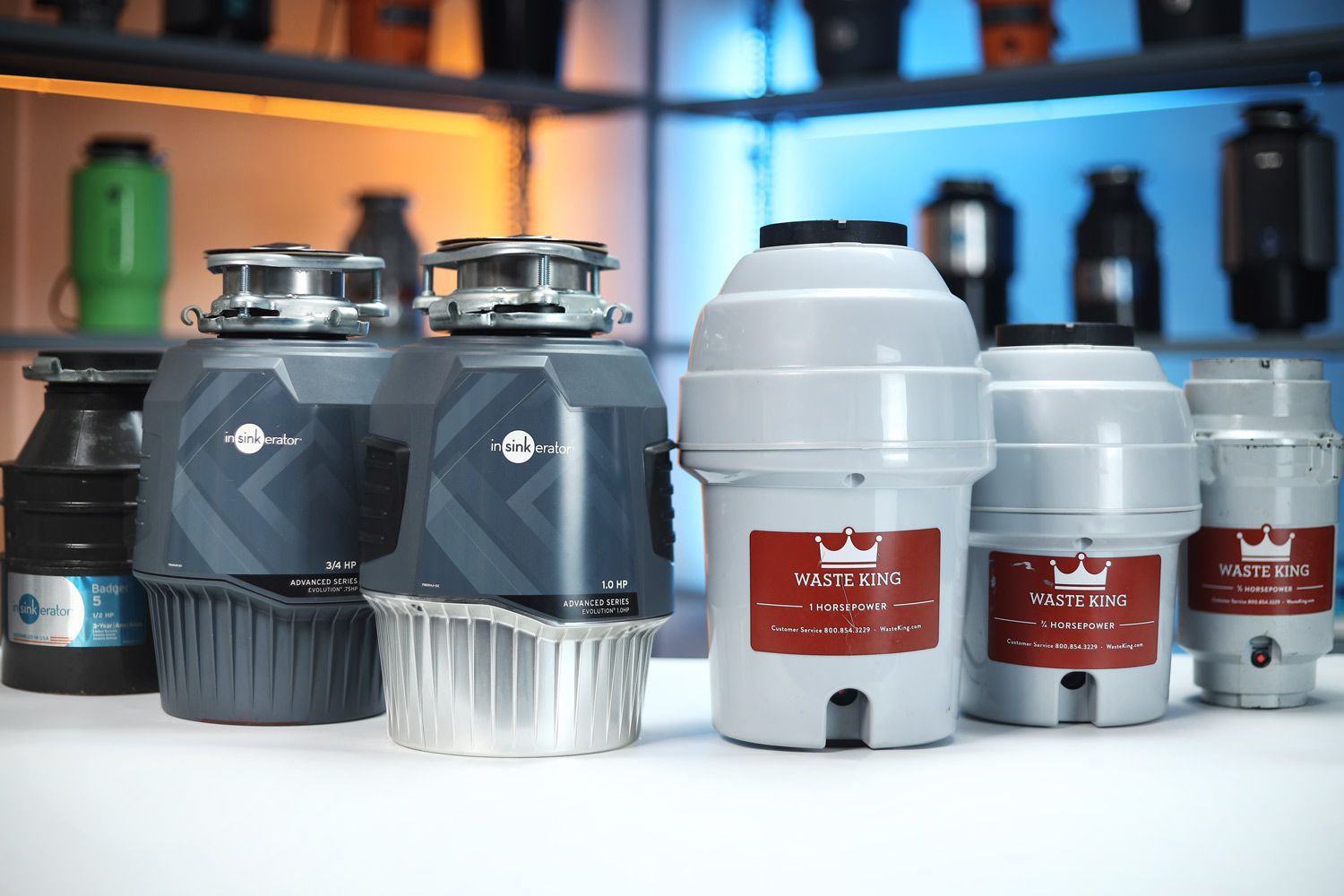Our recommendations are made independently. We may receive commissions from purchases made via our links.
How to Handle a Garbage Disposal Not Working: User’s Guide
There are many reasons as to why your garbage disposal could quit working on you. Here is what to do to handle a garbage disposal not working.
A garbage disposal system has become standard equipment in many kitchens across the country. It drastically cuts down on the amount of trash piling up inside the can, making your kitchen feel freer and cleaner. Not to mention the fact that it makes working in the kitchen much more convenient, too.

With all of that in mind, then , we understand how incredibly frustrating it can be when your garbage disposal quits working on you.
Before you take the time and money to call in a professional technician, here is our guide on how to handle a garbage disposal not working by yourself.
Reminder: Exercise caution. Certain steps will require you to handle electric parts. If you are not comfortable with doing that, it’s best that you call in a professional rather than doing it yourself.
Garbage Disposal Not Working: Why You Should Troubleshoot It by Yourself First
Most of the problems that cause the garbage disposal to stop working can normally be fixed by the user. Some basic issues (clogs caused by large foreign objects, for example) can be quickly and simply resolved. A few other problems may require a little bit of technical know-how (resetting the garbage disposal), but even these steps can be learned on the fly quickly by most people.
Therefore, it’s best that you check the disposal and see if it has any apparent issues that you can fix by yourself before you call in a service technician. It will cost you less time and money this way.
Common Problems with Garbage Disposal Systems
Garbage disposals are designed to be as reliable as possible. Thus, when it suddenly stops working out of the blue, it’s most likely a user error.
One of the most common mistakes that people make when it comes to the garbage disposal is that they think of it as a mechanized trash can. The system is built to handle solely food waste, so if any kind of debris other than food gets into the chute, the disposal is going to jam up.
In case a large foreign object does find its way into the chute, it is going to get stuck between the grinder blades and stop them from rotating. This issue is typically characterized by an unusually loud humming noise emanating from the bowels of the unit.
If the clog isn’t removed quickly, the disposal could get overloaded. When this happens, a circuit breaker automatically kicks in to prevent the unit from being damaged.
Another common user-fixable issue is a leaky disposal unit. This often occurs in old systems that have been working constantly for a while and haven’t been properly maintained. A part or component of the system may come loose and allow water to leak out. Fortunately, this tends to be an easy fix.
Garbage Disposal Won’t Turn On: What to Do
See If It’s Plugged in
The first thing you should do when the garbage disposal doesn’t turn on is to check whether it’s been properly plugged in or not. It’s not uncommon for the disposal’s power plug to loosen up and fall out of the socket after a while.
How to the Reset Garbage Disposal
If the plug is solidly in place and the machine still doesn’t turn on when the power button is pressed, there is almost certainly an electrical issue.
Peruse your garbage disposal’s manual (if you still have it) and find the unit’s reset button. If you can’t find the manual, the reset switch is normally located at the bottom of the unit.
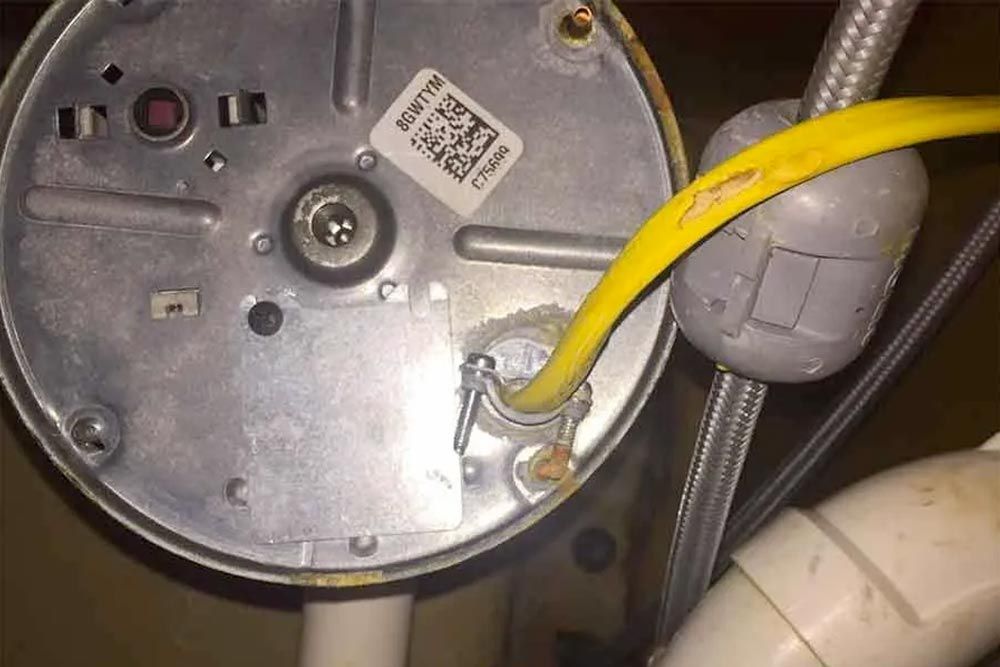
This switch is connected to the unit’s circuit breaker. When the breaker is tripped for whatever reason and interrupts the unit’s power supply, the switch will spring outward. By pushing the switch back into place, you can restore power to the unit.
If the disposal still doesn’t turn on when you press the reset switch, move on to the next step.
Check the Primary Service Panel
Head on over to your home’s main electrical service panel and find the circuit breaker for your garbage disposal unit. If the breaker has tripped, reset the breaker’s lever and restore power.
Check the Garbage Disposal’s Wiring
If none of the previous steps work, then it’s most likely a problem with the disposal’s internal wiring.
However, before you begin with this step, we highly recommend that you call in a professional unless you’re technically proficient. You will need to delve deep into the bowels of the disposal unit to disassemble it and possibly even rewire it if there are indeed wiring problems.
If you aren’t careful, you could permanently damage the disposal unit. Even worse, because you will be getting quite close to electric lines, fiddling with the disposal could be life-threatening. Therefore, be very certain that you have what it takes before busting out the toolbox and getting your elbows greasy.
The very first thing that you want to do is to cut the unit’s power. Unplug the unit and flip the disposal’s circuit breaker over at your main service panel. If possible, you should even flip the primary circuit breaker altogether and cut off the power to the entire house.
Do whatever you must, but by the time you disassemble the disposal, be very certain that none of the electric wires within are active.
Once power is disabled, locate the disposal unit’s power switch. The switch can either be installed up on the wall or, in many cases, underneath the sink.

Using a screwdriver, disassemble this switch and check the state of the wiring inside. If the wires connected to the switch look loose, tighten up the wires and that should fix the problem. Loose power wires are a pretty common problem, not just for garbage disposals, but for appliances in general.
Come back out, replace the switch, and turn the power back on by resetting all of the circuit breakers. Check the unit again to see if the problem has been resolved.
Check and Replace the Power Switch
If the switch’s wires are fine and there still isn’t power, chances are that it’s a problem with the switch itself. In this case, you will have to replace the power switch altogether.
This will be a fairly complicated procedure, so, as always, unless you’re very sure that you can do it, you should just call in professional technicians who can do it for you. It will require familiarity with circuits and wirings.
For those of you who still want to continue, here are the tools that you will need:
- A Phillips screwdriver
- A circuit tester (preferably the non-contact type)
- Wire cutters and stripper
- A pair of needle-nose pliers
- A new single-pole switch
- Electrical tape
- Grounding pigtail
Disabling the power to the unit would be the first thing to do. If you want to be very sure, disable the entire house’s electric network.
Once the power is off, you can begin to disassemble the disposal unit’s switch. Start by removing the cover plate using your screwdriver.
Just to be very certain that you’re safe to continue, once the cover plate is off, use your circuit tester to check if there’s still a current inside. If the tester starts flashing and beeping, stop immediately as there is still a live current inside the switch. Head on over to your home’s service panel and recheck all of the circuit breakers. Find the one that’s still on and turn it off
When you have verified that the power is indeed off and no active currents are inside the switch, you can proceed to remove the switch. You can do this by taking out all of the mounting screws pinning the switch to the in-wall power box.
Carefully move the switch away from the box by tugging it outward. Do this very slowly to avoid stressing or damaging the wires within. If the wires are old, the insulation can literally crack and come apart with too much force.
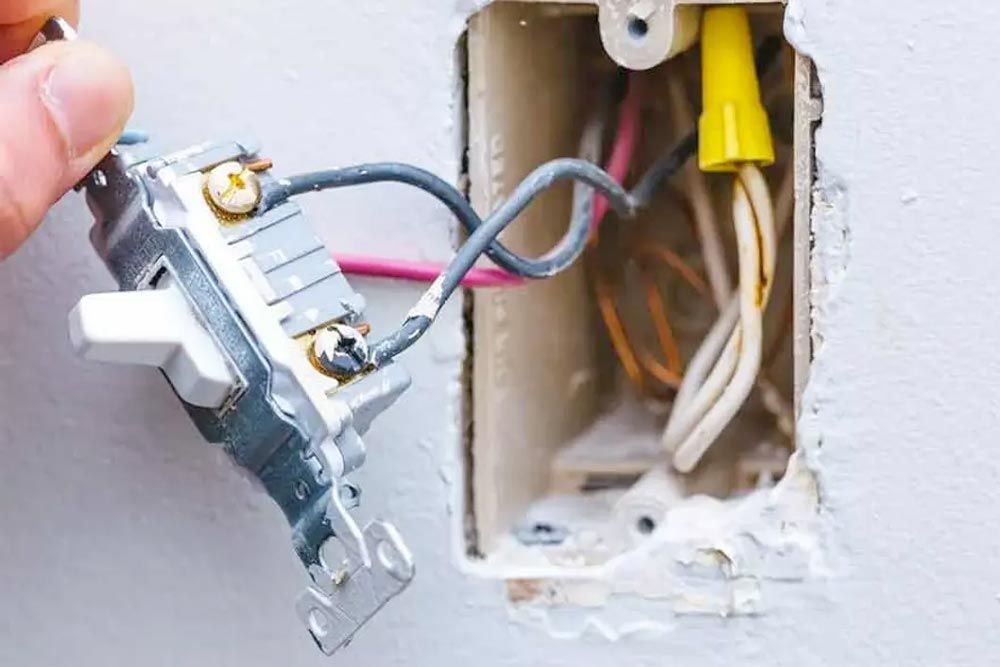
Now that the switch is removed, use your screwdriver to disconnect all of the wires from the screw terminals.
Take note of the wire loops at the end of each wire to see if they are damaged. If that is the case, use your wire cutter to shear away the damaged portion. Then, use your wire stripper and strip ¾-inch of insulation from the wires. This should expose a newer, less blemished section of bare copper that will later be used to connect to the new switch.
Some switches will also have a grounding screw and circuit grounding wires attached. These should also be removed if present.
A word of advice: if your switch doesn’t have any grounding connection, it’s highly recommended that you set one up on your new switch using grounding pigtails. An ungrounded switch is a grave electrical safety hazard. We will explain how to do it while you’re installing your new switch.
To install a new switch, you will need to establish three connections: the pigtail and two hot wires.
Take out all three wires and bend the exposed copper at the end of each wire into a letter C shape. You will need these loops to connect the wires to the terminals.
Start first with the pigtail.
One end of the wire should already be attached to the rest of the circuit grounding wires inside the compartment behind the switch. You can do this by loosening up the wire nut (colored green) that holds the grounding wires together, joining up the pigtail with the wire bundles, and putting the nut back into place.
The other free end will go to the grounding terminal on the switch. You can distinguish the grounding screw by its green color. Loosen up the screw, loop the wire around it, then tighten the screw back into place.
Once the pigtail is in place, you can move on to the rest of the wires. Loosen up the screw terminals on the switch and attach the hot wires to them, then re-screw.
Ensure that all of the connections are secured.
That’s the bulk of the job already done. Now you only need to put the switch back on (be very gentle with the wires while you’re putting the new switch into place) and put back the mounting screws. Be sure that you put the switch back in the right orientation by watching the ON/OFF marker.
Reattach the cover plate, then head to the service panel and bring the power back on. See if the switch is working properly (and the garbage disposal, too.)
At this point, if your garbage disposal unit still doesn’t work, it’s possibly beyond saving. Professional technicians would probably even write it off, so you should consider getting a new garbage disposal altogether.
Garbage Disposal Makes a Humming Noise
In this scenario, the power is on and the disposal seems to be working just fine from the outside. But instead of grinding up your trash, it only emits a humming noise.
This unsettling noise is actually a sign that the impeller blades are jammed and cannot turn due to a clog. Many garbage disposals are equipped with safety mechanisms to stop the motor when this happens. Nonetheless, many units will just keep on trying to grind as usual and the result is the unsettling humming noise that you hear.
Shut down the unit immediately and do not turn it on again until the clog is cleared. If the motor keeps on trying to grind while clogged, it will eventually burn itself out.
Usually, clogs are caused by oversized food bits or other foreign objects (twigs and stones from outside) falling into the disposal. When they manage to wedge themselves between the impeller blades, they effectively stop the blades from turning, freezing up your disposal.
Fortunately, clearing a clogged unit is quite easy. However, you should still exercise caution and never put your limbs near or into the disposal’s grinder. Even if the power is off, it’s good safety practice to refrain from doing so.
The first thing to do is to shut off power to the disposal through the service panel’s circuit breaker and the unit’s dedicated power switch.
When you first got the disposal unit, you will have been given an offset wrench. Insert the head of this wrench into the flywheel’s turning hole. Turning the flywheel clockwise will eventually separate the flywheel from the jammed impeller blade. When this is done, you will feel the flywheel rotate more smoothly.
If you have lost the offset wrench, you can use a hex wrench (Allen wrench) instead. It can be purchased at any hardware store.
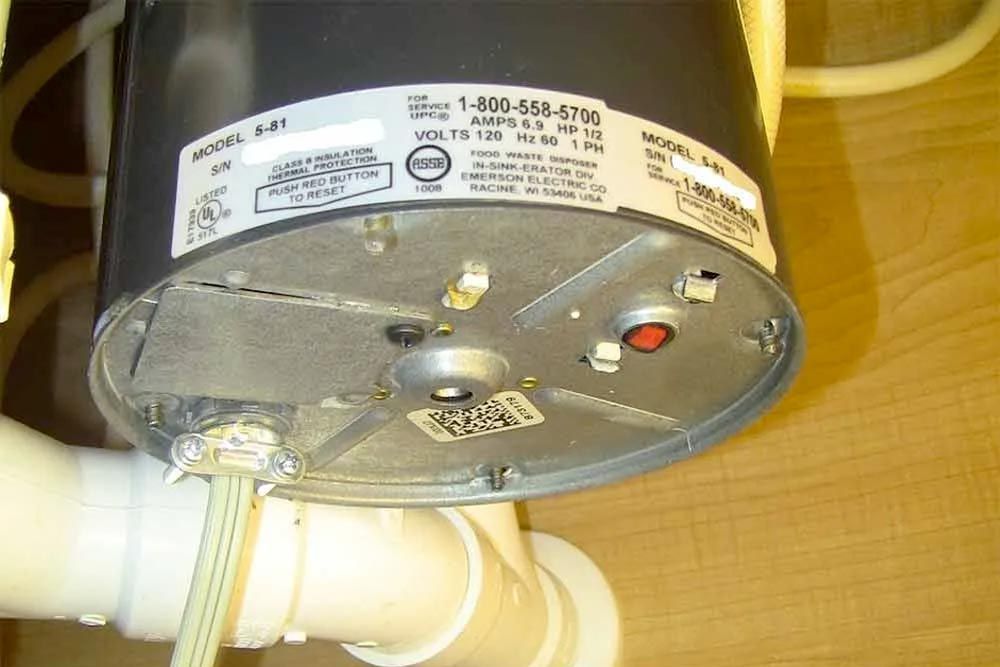
You can now flip the garbage disposal’s circuit breaker on, but do not turn the unit’s power switch just yet. Find the disposal’s reset button first and press it. Then, pour water down the unit while quickly turning the disposal’s power on and off. As the flywheel spins alongside the running water, any scraps of debris still left between the blades will be cleared out and swept down the drain.
Conclusion
Knowing how to handle a garbage disposal not working surely is a handy skill to have if you got one in your kitchen. We hope this guide has cleared things up for you.
